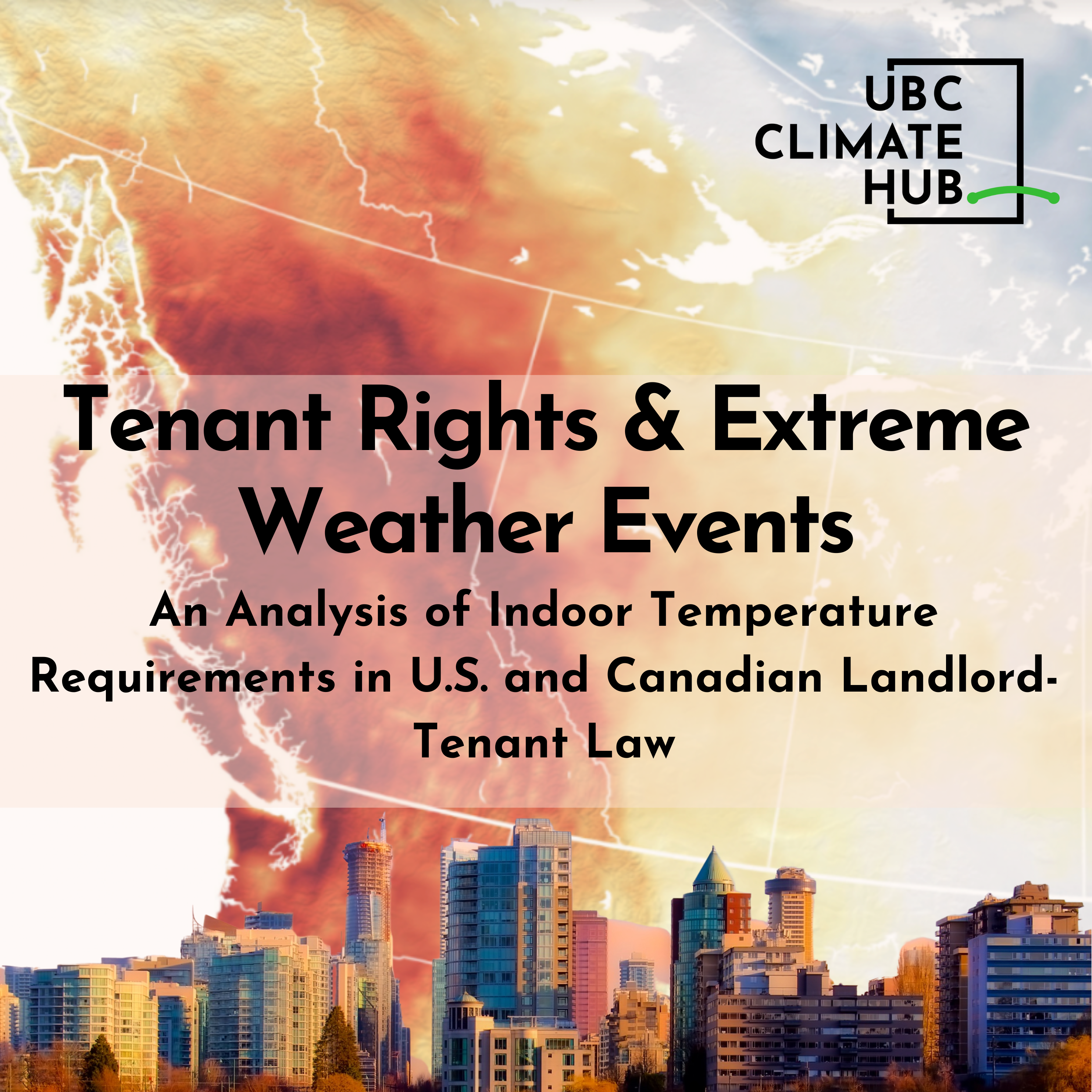
Author: Amelia Linett, Marium Ahmed, Vaniartha Vaniartha
Faulty Supervsior: Dr. Mohammed Rafi Arefin
Community Partner: Tenant Resource and Advisory Centre BC
Graduate Academic Assistant: Rachel Stern.
Year: 2022

In June and July of 2021, a fatal heat wave engulfed the northwest coast of North America. There is extensive scientific evidence that extreme weather patterns like heat waves are increasing in both frequency and severity due to climate change; however, insufficient attention has been dedicated to exploring the intersections of landlord-tenant law, housing justice, and climate change. Throughout most of Canada, heat is considered a “vital service” that landlords are required to provide in almost all circumstances, although provinces structure these policies in slightly different ways. There is no policy at the provincial level that guarantees a tenant’s right to air conditioning or sufficiently cool living spaces. An analysis of the current state of Residential Tenancy Legislation in British Columbia reveals that legislation does not include virtually any provisions to protect tenants from periods of extreme temperature. Institutionalised injustices stemming from the socioeconomic and political conditions of the 1950’s have also isolated tenant communities such that attempts at mass mobilisation and community-led action have been largely unsuccessful. This suggests that B.C. would benefit from a collectivisation of individual organisations’ housing-rights activism, and a push for the Residential Tenancy Branch to amend laws such that they protect tenants from extreme weather events.
The city of Toronto has, since 2001, required that landlords maintain an indoor maximum temperature of 26°C from June 2 to September 14, only in residential rental properties in which AC is already installed. The city has been considering extending this maximum temperature requirement to all rental properties—a policy that is supported by the Board of Health, the City Council tenants’ issues committee, advocacy organisations, and tenants themselves. The primary barriers to a minimum temperature provision identified in this research are: 1) the capacity of building and city-wide electrical infrastructure, 2) the cost of air conditioning or heat pump installation and the concern that these costs will be borne by tenants, 3) resistance from a segment of landlords, and 4) municipal government bureaucracy and delays. Similar issues exist in Oregon, where the lack of maximum temperature limits and cooling requirements for housing, inadequate funding, and overall lack of awareness about the heatwave have all contributed to the increased risks faced by tenants during the heatwave.
Through this comparative study of existing tenant protections related to extreme weather in different cities/states, we provided an useful resource for the advocacy work of TRAC and other tenants’ rights organizations in BC.